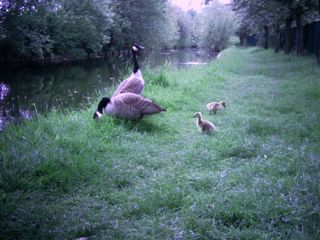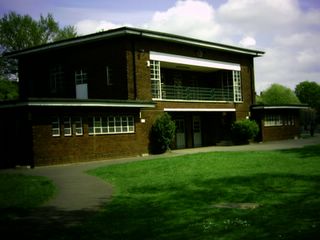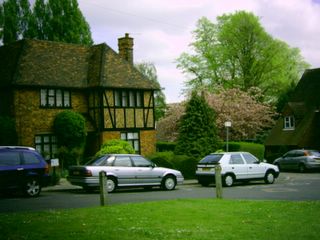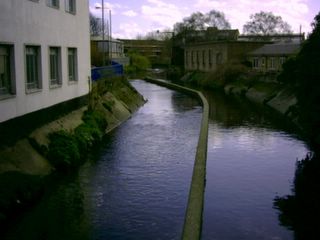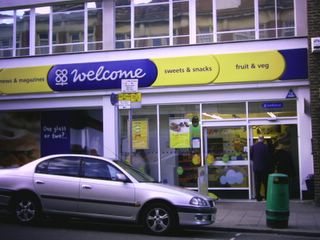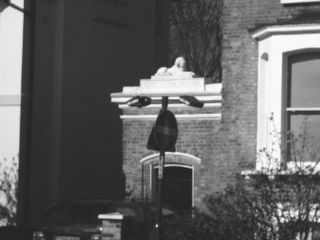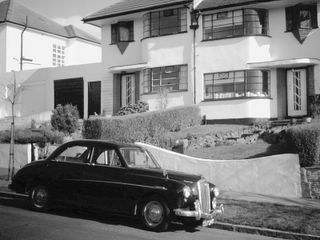Maundy Thursday afternoon is always given to British Civil Servants as a half day off, and I never know what to do with it! This year I did two of my capital ring walks.
Starting in Richmond, Surrey I crossed the river at Richmond lock and for the first time in this walk went north of the Thames into Middlesex! Richmond lock cost £60000 to build in 1894 and each of the sluices weighs 32 tons. Thus we leave Richmond behind and cross to Isleworth. Isleworth had a deserted convent and residential home called Nazareth House, which William IV visited (it sez ‘ere). I don’t know why he would visit it. After this the passage of the walk is blocked presumably because people in the posh riverside flats don’t want walkers coming near them. The walk has been diverted since 2004 so it’s time something was done. I’ll let you know how I get on with Hounslow Council’s rights of way officer.
After that disappointment I walked past Isleworth Ait nature reserve and listened for a bit to the birdsong. Passing the London Apprentice inn, which dates from Tudor times,
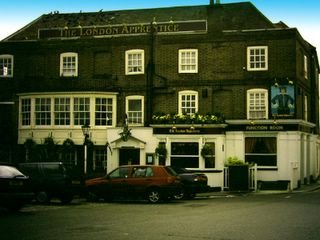
The London Apprentice at Isleworth

and a Gothick house on the banks of the river
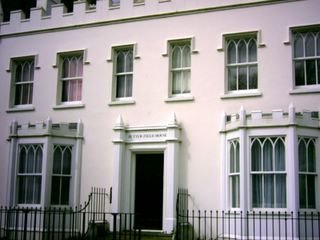
Gothick house at Isleworth

I came to the Church of All Saints Isleworth. The only part of the structure that is old is the tower but this curious sundial on the wall of the church counts our sunny hours.
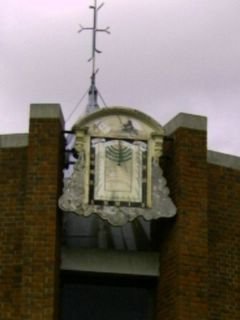
The curious sundial on Isleworth Church

The next place of interest is Syon House with the Percy lion on top. This weighs three tons (according to Arthur Mee) but eluded the picture I took of the house. This is the home of the Duke of Northumberland along with Alnwick Castle (used for the filming of Harry PotterTM) and Northumberland House in London. They have a pink summer house in the garden, and two cottages that look like towers. I wonder if any of these are available?
After Syon the path led me to the Grand Union Canal basin with its colourful narrowboats. There was a covered dock with a gloomy air of dereliction right next to some nice flats. This dock was in use until the 1980s. Walking by the peaceful canal turned my mind to thoughts of narrow boats and whether I should get one or not. Maybe I will…
The rest of this stage was up the Grand Union Canal past Boston Manor with its wonderful plaster ceilings and ended at Osterley Lock which marks the half way point of the Capital Ring. It has taken me less time than I thought to go round.
I decided to go on to the next section, which goes from Osterley Lock to Greenford. The Canal follows the course of the River Brent but sometimes there are cuttings to make it straighter. Obviously being a canal there are industrial developments along the banks but these were not obtrusive. I left the canal at Hanwell lock and followed the course of the River Brent along Fitzherbert Walk where I saw robins and magpies, and Ealing Hospital being demolished. I reached Hanwell Bridge where there is a tunnel underneath the bridge although the direction posts advise one to cross the road as the tunnel may be flooded. Going under the Bridge enables one to see the differing structures of the bridge, from the 1762 original and three widenings although the rough stone original looked a lot earlier than 1762 to my eyes. Hanwell Town Centre has a cabinet maker and a glass printer. There is a very impressive viaduct with the coat of arms of Lord Wharncliffe on it as he promoted it. Wortley Hall near Sheffield was the family seat however this is now the Labour Educational and Recreational Holiday Homes, a coöperative holiday centre.
The park below it contains beautiful pansies in bloom, a tree in blossom
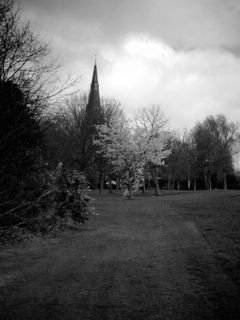
The blossom tree

and a maze commemorating the millennium. Adjoining the church, this park is very beautiful. There were robins here too! I followed the course of the Brent over a bridge and through the Ealing Council golf course onto a reclaimed landfill site, and into the suburb of Greenford. I saw a jay in Perivale Park. Also in Greenford it seems that people do not move when their house is too small: they build on to them. This picture was one of the worst examples but by no means untypical.

Beauty in Suburbia? (Greenford)

Why do people ruin a perfectly well proportioned house? Later in this street the houses were better and some pictures could really be beauty in suburbia. However the Central Line Viaduct dominates the backs of these houses. It is a c.1930s structure built of concrete to mimic a Victorian viaduct with arches and bricky lines on it. It looks absurd and false. I ended my walk at Greenford station with a look at what is next to come.




